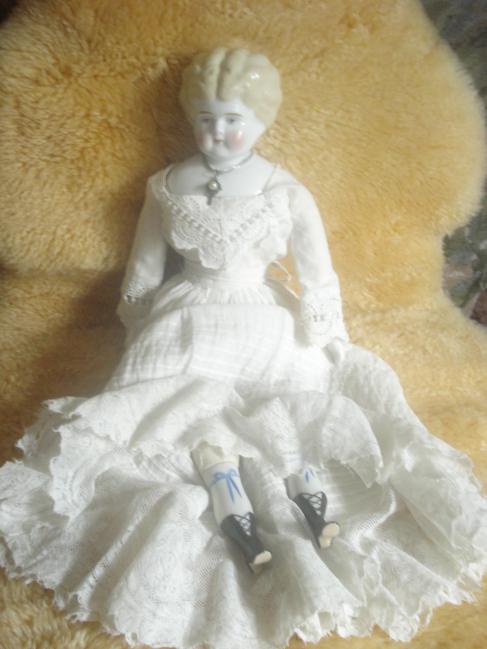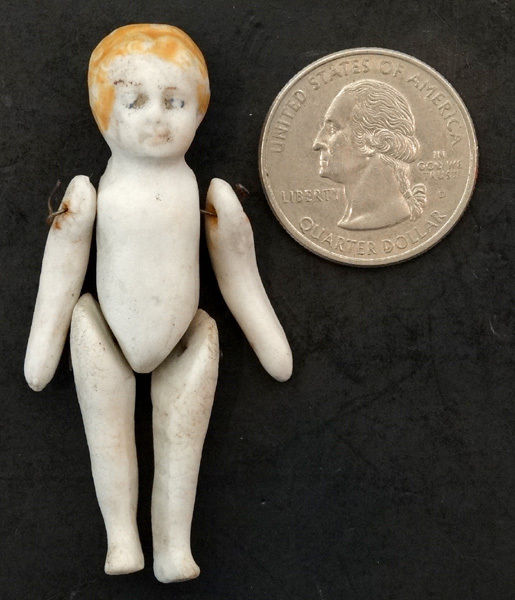Featured Fragment – Houston-LeCompt archaeological site’s dolls
For hundreds of years, dolls have been a staple in homes with young children. When discovered archaeologically, these playthings reveal much about the culture of those who played with them. Dolls belonged to girls and were used not only for play, but to teach gender specific management skills such as being a good hostess, wife, and mother (Krofft 2014; 58). As historical archaeologist and author Jane Eva Baxter reiterates, “Adults use toys as a means of defining age, gender, social class, and as a mechanism for delegating particular tasks, behaviors, and attitudes” (Baxter 2005). Even today, dolls are used to encourage children to act like adults and ‘playact’ household tasks such as taking care of their baby, hosting tea time, or going to the store.
A number of doll parts were recovered from the Houston-LeCompt site in New Castle County, Delaware. The site, which dates to the late-eighteenth through early-twentieth century, began as a middling farmstead and transitioned to a tenant-owned farm in later years. Doll parts recovered from the Houston-LeCompt site include arm, leg, face, hair, and feet fragments belonging to a variety of doll types.
The jointed arm fragments, pictured below, belong to all bisque miniature dolls made of unglazed porcelain called bisque. These dolls were first produced in the late-nineteenth and early-twentieth centuries in Germany and France and populated children’s doll houses. Most all bisque miniature dolls are unmarked; therefore, deducing exact origins and dates is difficult without the doll’s clothing.
Bisque porcelain leg fragments were also recovered at the site—some with markings, some without. Those with markings allow for further analysis and identification. The porcelain leg fragments recovered belonged to china-limb dolls, a doll with a head and limbs made of porcelain attached to a non-porcelain body. These fragments allow for easier dating due to their reflection of fashion at the time of production. As in today’s world, a doll’s fashion changes to stay up to date with the latest trends. One leg fragment recovered has a blue hand-painted ribbon at the knee, similar to the low brow “Fiona” china doll pictured above. Elaborate stocking and garter decorations, like the blue ribbon, became popular later in the nineteenth century. Another fragment recovered was a pink heeled shoe. Because the shoe has a heel, it is presumed to be dated post-1870, as that is when heeled shoes became increasingly popular.

Hand-painted china-limb doll leg, china doll foot, and bisque china-limb doll leg recovered from the Houston-LeCompt Site, Delaware
Any distributions of blog content, including text or images, should reference this blog in full citation. Data contained herein is the property of Dovetail Cultural Resource Group and its affiliates.
References:
Bach, Jean
1983 The Main Street Pocket Guide to Dolls. The Main Street Press. Pittstown, New Jersey.
Baxter, Jane Eva
2005 The Archaeology of Childhood: Children, Gender, and Material Culture. AltaMira Press. Walnut Creek, California.
Ebay
2015 Image of Bisque miniature doll with jointed arms and legs, accessed December 21, 2015,https://www.ebay.com/itm/321844012225
Krofft, Heidi E.
2012 Growing Up A Washington: Childhood in 18th-Century Virginia.University of Massachusetts Historical Archaeology Program. Boston, Massachusetts.
Stewart, Jennifer
2013 Image of “Fiona,” a Hertwig low brow china doll with blue ribbons painted at knees, accessed December 21, 2015 https://quintessentialantiquedolls.wordpress.com/tag/dorothy/
Artifacts recovered for the Delaware Department of Transportation and the FHWA



